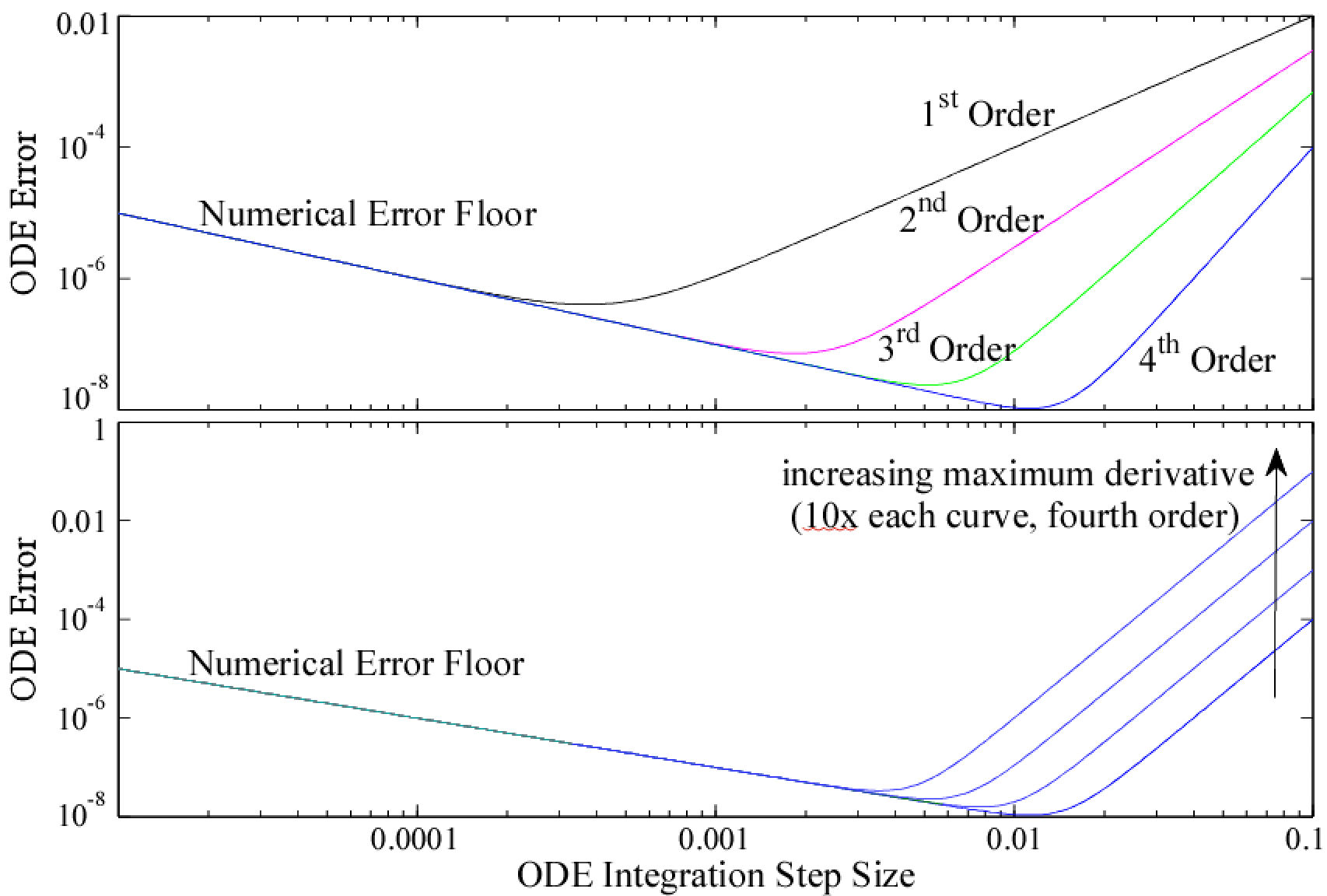Order of ODE algorithms
- n-order method shows computation within hn+1 of the numerical accuracy.
- n-order method error bounds are within the fn+1( ). High derivative (and increasing derivatives, e.g. exp( )) result in wide error bounds (potentially high error) that can lead to a lack of solution stability.
Numerics for Stiff Differential Equations
- Roughly 1-bit error every 4 additions.
- ODEs have continuous addition of variables (smaller h, proportionally higher error)
- Smaller h, more issues with lsb errors.
- Longer running sequences result in higher numerical error

Figure 1: Numerical ODE solution convergence and numerical error as a function of ODE numerical approximation and as a function of numerical derivative estimation.
Numerical Solution of ODE references:
- On-line textbook (K. Atkinson, et. al)
Numerical Simulation of Differential Equations
Numerical solution of ODEs is a critical aspect of exploring Neural Network algorithms.
Simulate the following ODE system:
- x(t) = cos(2 π f t + θ ), where f = 1kHz, with phase θ
- the input dimension of x(t) is 10 or larger with different phases.
- τ is 0.2ms
- τ w'(t) = y * x (vector) - y2 w
- y(t) is a single dimension, y(t) = WT (vector) x(t)`
- Simulate this ODE for 5 seconds of physical time.
- Show w(t) and y(t)
It is assumed you will be using an ODE solver package that you will be using throughout the semester. Just explaining which package you are using is sufficient. You need to show me the code that you wrote for this simulation (e.g. not the ODE libraries that you used.